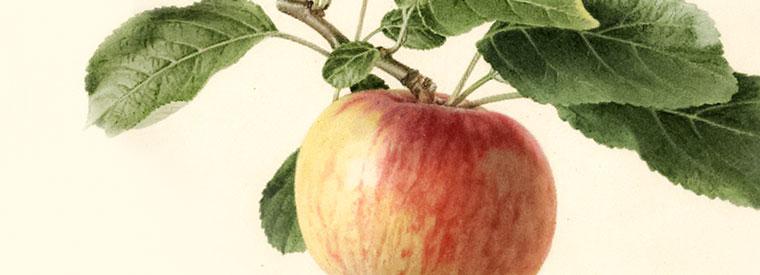Stay me with flagons; comfort me with apples.

Fruit
CORNISH GILLIFLOWER was discovered in a cottage garden in Truro, Cornwall, England, at the end of the 18th century and was introduced in 1813. John Lindley, in the Pomologia Britannica in 1841, wrote: "This is the best apple that is known, if high flavour, combined with a very rich subacid saccharine juice, be the qualities we most desire in fruit…(it) gives out a pleasant perfume resembling the clove." Robert Hogg, in the Fruit Manual, informs us that the word "gilliflower" came from the Old French word "girofle," meaning "a clove." Presumably, the clove-like odor is emitted when the fruit is cut and is not the skin odor. The fruit is cosmetically unattractive, usually a dull green with some brownish red markings and webbed, with a thin, rough, russet. Sometimes, a few specimens will develop into a clear dark red. The shape is round, conical, tapering at the base to a five-pointed nose. A tip bearer on long thin shoots, the fruit hangs on until overripe and must be watched carefully at picking time. Meduim-to-large in size, under a rough, bumpy and dry skin, the flesh is rich and exceptionally flavorable. The leaves are smaller than average apple tree leaves, and the tree is a weak grower and shy bearer. This dessert apple ripens in October.
Ripening Period
- Mid Fall - October

